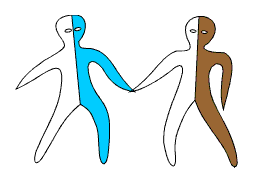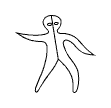Download This Content
APoGI for the Haemoglobin Disorders
![]()
Download This Content ![]()
There is no particular problem for this couple. This combination cannot cause a serious inherited anaemia in their children.
| Partner who carries haemoglobin Lepore thalassaemia |  |
Partner who carries haemoglobin D (type unknown) | |
 |
 |
 |
 |
| Not a carrier | Carrier of haemoglobin Lepore thalassaemia | Carrier of haemoglobin D (type unknown) | Child who carries both haemoglobin Lepore thalassaemia and haemoglobin D (type unknown) |
In each pregnancy, there are four possibilities:
This couple has the same chance of a healthy family as other couples do.
... they should have blood test to see if they have inherited haemoglobin Lepore thalassaemia or haemoglobin D. If they have, their partner should have a test "for haemoglobin disorders". It is important to remember this for the future.
![]()
![]() Adobe Acrobat format (PDF) in colour and black-and-white
Adobe Acrobat format (PDF) in colour and black-and-white
![]() Microsoft Rich Text Format in colour and black-and-white
Microsoft Rich Text Format in colour and black-and-white
![]()
These documents are part of the APoGI May 1998 (Evaluation) Release and are made available subject to the APoGI Disclaimers covering usage, distribution and copying.
Problems or further enquiries to APoGI@chime.ucl.ac.uk or the APoGI Contacts
Copyright © 1984 -1998 UCL Medical School. All rights reserved.